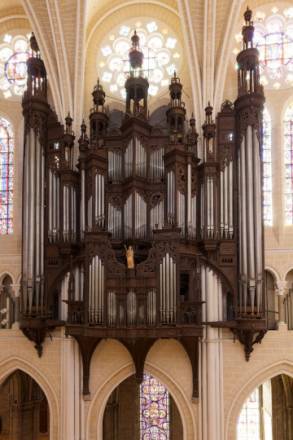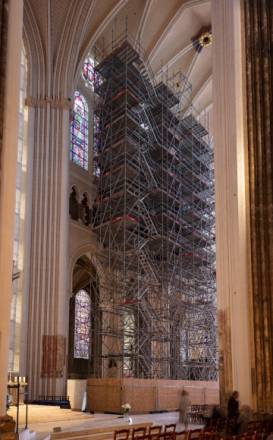Construction of the large organs of Notre-Dame de Chartres cathedral: restoration of the old buffet and creation of a new instrument
The DRAC Centre-Val de Loire has just embarked on a major new project at the Notre-Dame de Chartres cathedral: the restoration of the large organ buffet, classified as a historical monument, and the creation of a new instrument, the liturgical and cultural requirements of the monument.
Mis à jour le
The presence of an organ in the Cathedral of Chartres has been proven for more than 6 and a half centuries. The instrument as it stands today is based on the configuration adopted in the 15th century. Since then, each epoch has brought its own updates, modifications, enlargements, additions and mutilations.
One transaction over 36 months
Expected for many years by the affected clergy and by the association of the great organs of Chartres, this operation will develop over 36 months for a total amount of work of 2 million euros. 1.2 million is supported by the State while the operation also benefits from the participation, to the tune of €100,000 each, of four partners: the Region Centre-Val de Loire, the Department of Eure-and Loir, the City of Chartres and the World Sanctuary Association Chartres.
The scaffolding mounted from mid-September to mid-October will allow to deposit the instrument of the 1970s and to deepen the study of the polychrome of the buffet.
The following months will be devoted to the restoration of the buffet and the creation of the pipes and various technical and musical components of the new instrument whose installation and blessing should be able to be celebrated before Christmas 2025.
The companies involved in this project carried out under the project management of Thierry Semenoux, technician-consultant for organs at the Ministry of Culture are the company Hussor Erecta for scaffolding and three organ builders: Mulheisen as agent, Chevron and Cattiaux.
The purpose of this restoration-reconstruction is to restore structural and decorative cohesion to the buffet and to provide the instrument with a coherent instrumental sound part that meets the highest requirements of use, both in terms of culture and culture.
Partager la page

